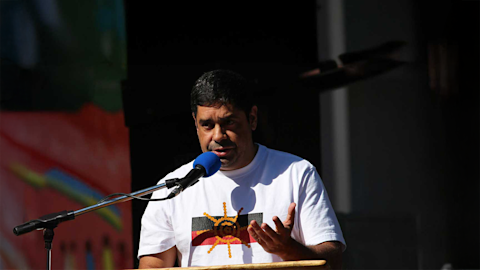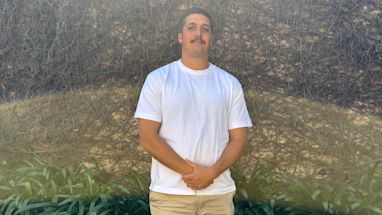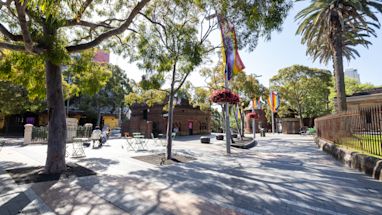For 20 years, Redfern Community Centre has been a place of learning, culture, and community for Sydney’s Aboriginal and Torres Strait Islander peoples.
Acting manager for Redfern Community Centre and Aboriginal development officer and proud Wiradjuri/Ngunnawal man Otis Williams has been driving a renewed focus on strong neighbourhood ties.

Describe your role at the community centre
It’s all about engaging with our Aboriginal and Torres Strait Islander community – I want to continue to strengthen my relationships with organisations in the area that can benefit our people.
I also create and engage programs for locals, which is something I really enjoy.
Share which programs you’ve introduced to the centre
We recently celebrated the 20th Anniversary of Redfern Community Centre. Community were able to re-live and bring people back to celebrate this huge milestone. We also worked in partnership with Gamarada to recognise our Coloured Diggers in April.
In the past we've run a popular men’s cooking program out of our kitchen which is run out of NCIE. Where we taught men how to eat well and healthy, and on a budget whilst focusing on our mental health.
Most get food relief hampers, so we try to focus on meals that use those ingredients. We show them how to make hearty basics, things like spaghetti bolognaise, home-made pizzas, fried rice and sweet and sour chicken.
One program I’ve worked on is our artefacts program. It was a unique way of helping local city Aboriginal kids connect with their culture. I saw it as bringing a bit of country to the city.
We started with clapsticks. I got them delivered to the community centre from Wiradjuri country, made from traditional woods like grey bark and mulga wood. They came in raw, with the bark still on.
Then we helped the kids make their clapsticks over several weeks. We helped them strip the sticks using a traditional tomahawk. Then they sanded, shaped, lacquered and painted them. It was so empowering for them, having that insight into their own culture. We’re planning to extend the program to include artefacts like didgeridoos too.

Tell us about the recent National Reconciliation Week event you held
We had Aunty Brenda Matthews share her story and the secrets of healing that is hidden in the past and brings Indigenous wisdom to today's modern world. Aunty Brenda Matthews is an accomplished and inspirational speaker, director and author of Last Daughter.
It can be a sensitive subject and I need to be aware of that. So, the truth-telling element was important to the days’ success because I wanted non-indigenous people to walk away having learnt something and using that to start conversations with others.
Our organisation completely supported our vision. Seeing it come to life exactly as we planned was awesome.
What does reconciliation mean to you?
After the Voice to Parliament outcome, I feel it’s more important then ever. Personally, I was deflated with how far we've still got to go with reconciliation. But after taking time to reflect, it has driven me to advocate more.
It’s more than having black and white people coming to the table together – it must be deeper than that. I’ve been sitting at this table for a long time, but non-indigenous people need to want to come and sit with me and have potentially difficult conversations.
You’re from regional NSW, what drew you to work for the City of Sydney?
I come from a town in regional NSW called Condobolin. I’ve been working for the City of Sydney for about 2 years now. The big draw card was the opportunity to work in Redfern, at this community centre.
The deadly employees that work here have made the transition so easy for me, I’ve had great support!
Redfern is such a historical place for our Aboriginal and Torres Strait Islander people. Mob come up to live and work here. I’ve even reconnected with family members that I’d lost touch with. It’s such an exciting and lively place.
I’ve had to make sure I let people know who I am, where I come from and build that trust to form those relationships. I had to understand the Gadigal country I’m living on now, their protocols. But Redfern is a place where there are people from different walks of life, and there’s many different Aboriginal nations living here.
One thing I respect about the City of Sydney is that it feels like Aboriginal voices are being heard, we are consulted with as valuable members of this community, and that’s important.
I come from a community of prominent Aboriginal people, but I’ve stepped into an environment where I can say the same. It’s a comfortable feeling, it feels good to be here.

Published 30 May 2024, updated 27 September 2024



